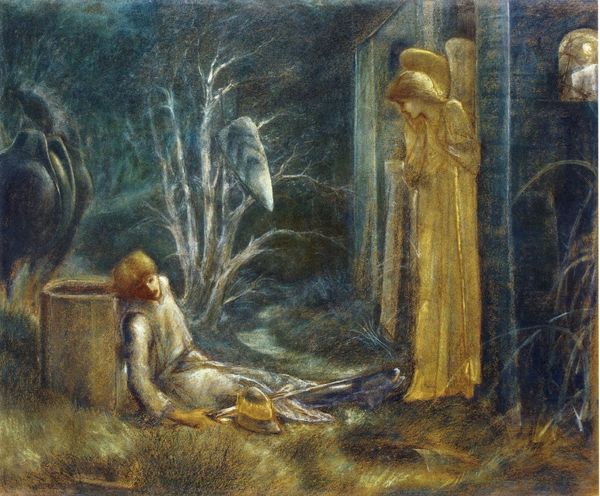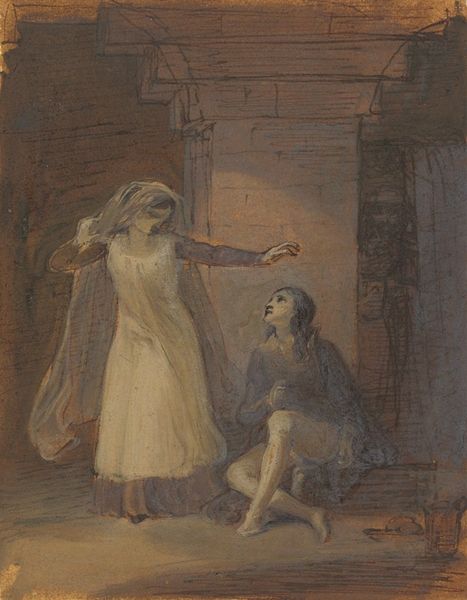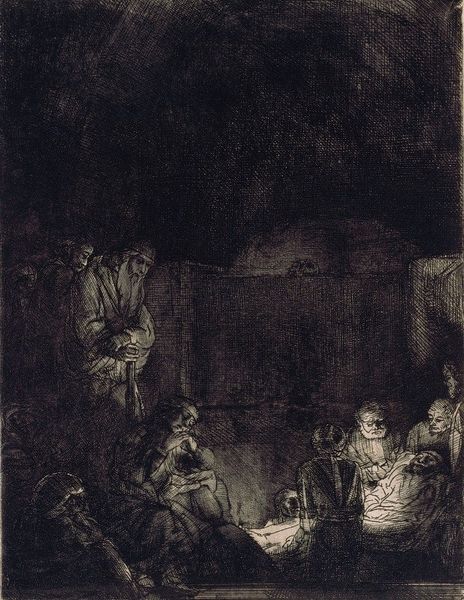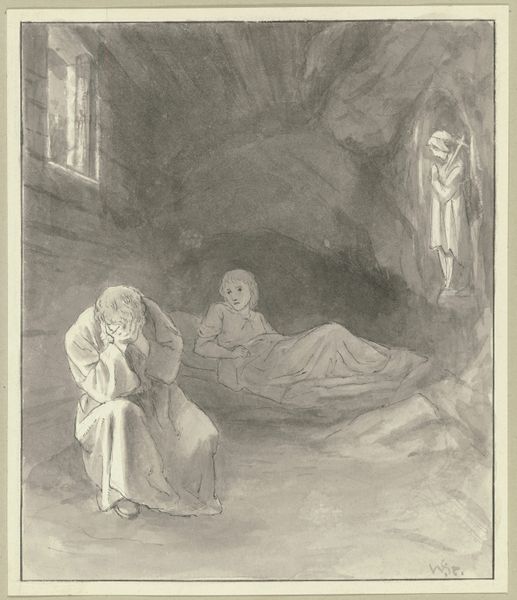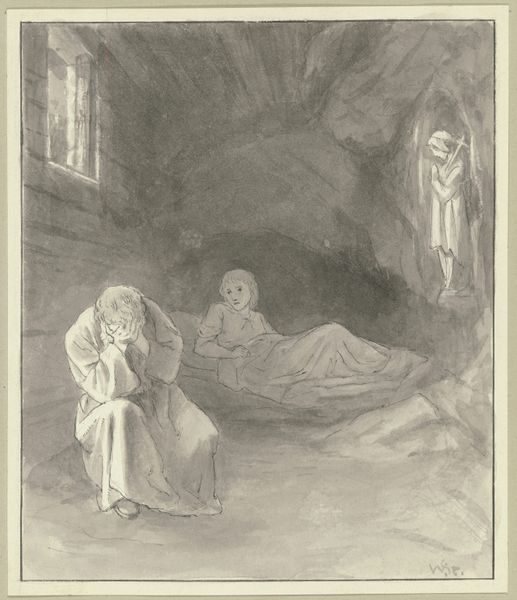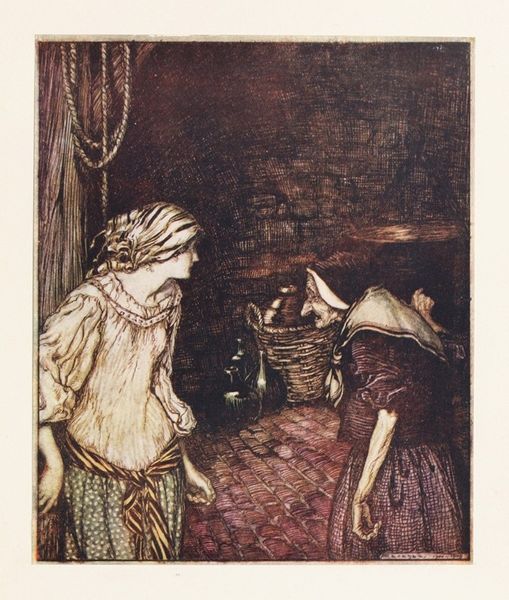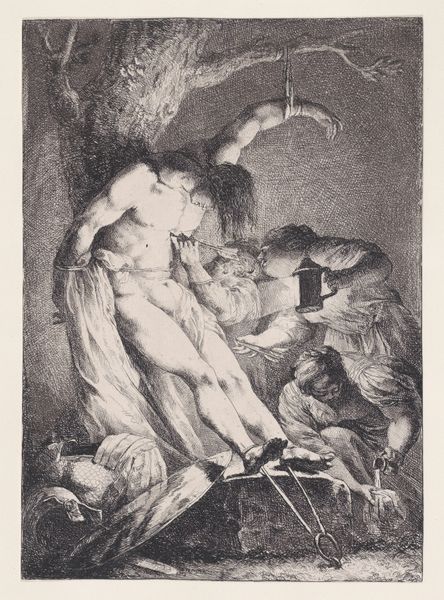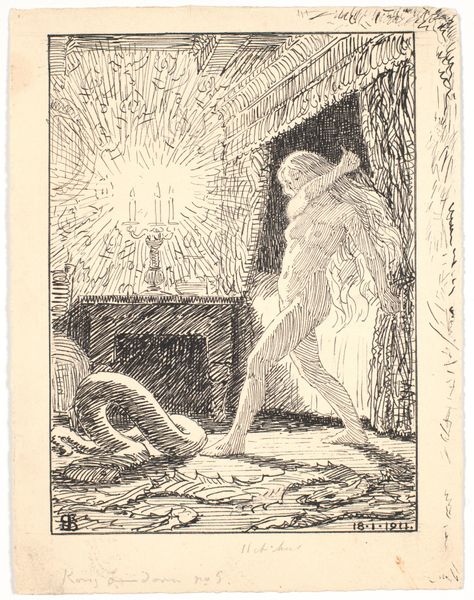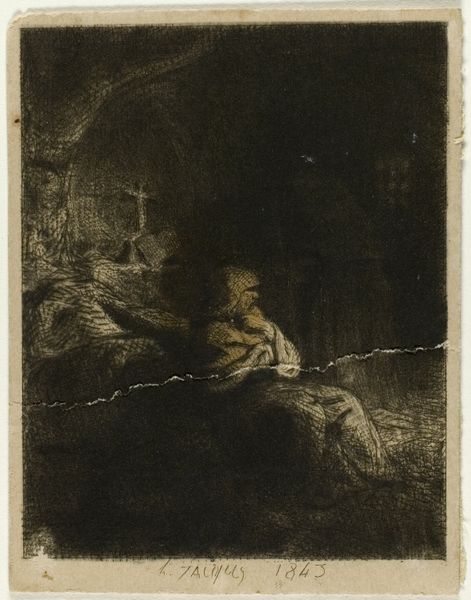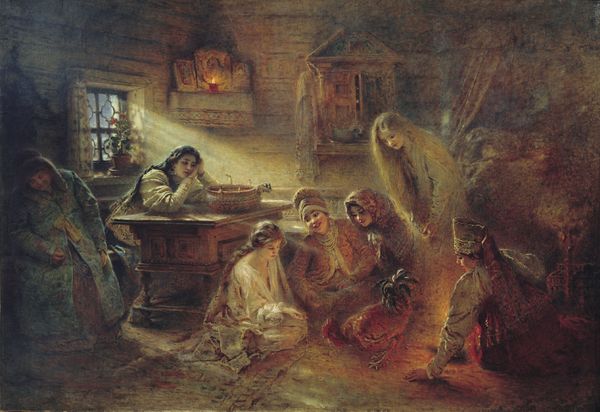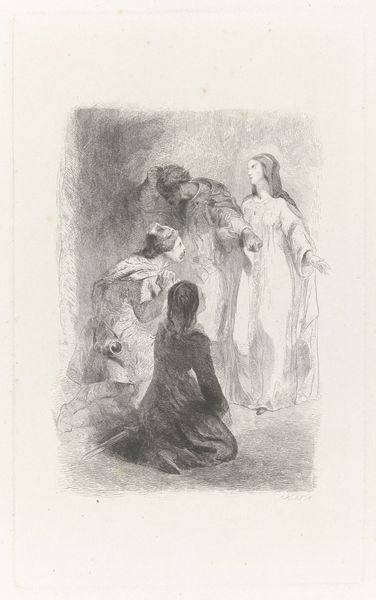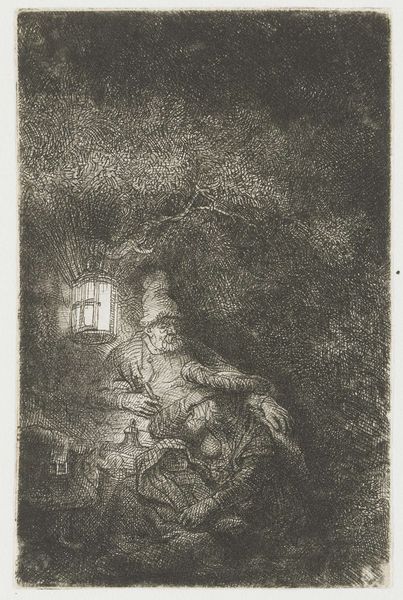
drawing, ink, pen, engraving
#
portrait
#
drawing
#
narrative-art
#
charcoal drawing
#
figuration
#
charcoal art
#
ink
#
romanticism
#
christianity
#
line
#
pen
#
history-painting
#
engraving
#
christ
Copyright: Public domain
Curator: Standing before us is William Blake’s “The Nativity,” created around 1800. It is currently housed at the Philadelphia Museum of Art. This work utilizes pen, ink, charcoal, and engraving techniques to depict a foundational scene from Christian theology. Editor: What strikes me immediately is the ethereal glow emanating from the Christ child. The figures are bathed in a light that's both tender and otherworldly, like witnessing a sacred dream unfolding. It makes my imagination soar, really. Curator: Indeed. Blake masterfully employs contrasting tonalities to guide the viewer's gaze. Observe the pronounced linear quality, especially in rendering the draped figures; consider how these visual choices underscore Blake’s roots in Romanticism and its departure from preceding artistic movements that pursued realistic renditions. Editor: Romanticism absolutely… Blake has these moments of clarity contrasted with chaotic linework… It creates this palpable sense of awe, though, don't you think? Like, you're a peasant staring in at a divine, glowing miracle happening in this dank room. The whole room practically breathes with a raw sense of amazement! Curator: I understand what you are saying, but might you be anthropomorphizing the image too liberally? It seems that he wanted to emphasize, formally, the visual and cognitive distance between the incarnated deity and all his worshippers. Editor: Maybe I am! Still… isn’t there this vulnerability in the figures, they are so human… like, that's a tired new mother and an overwhelmed Joseph beside her. Blake wasn't afraid of emotion! Curator: The historicity of emotional display and the symbolic framework must, though, be contextualized. Romanticism in general turned away from enlightenment aesthetics and reason towards a new paradigm of individual feelings as an emblem of authenticity. However, what makes the art, is the application of form and figure within space—not necessarily those expressed feelings. Editor: Okay, fair. But the fact is I get a whole rush of feeling from the way this one looks, and so, ultimately, it really stays with you! Curator: Yes, perhaps your experience serves to illuminate this artwork's ongoing potency within the cultural landscape.
Comments
No comments
Be the first to comment and join the conversation on the ultimate creative platform.
